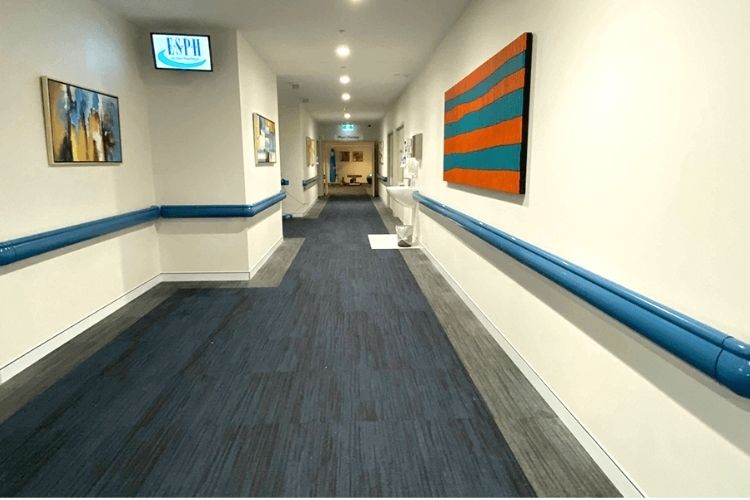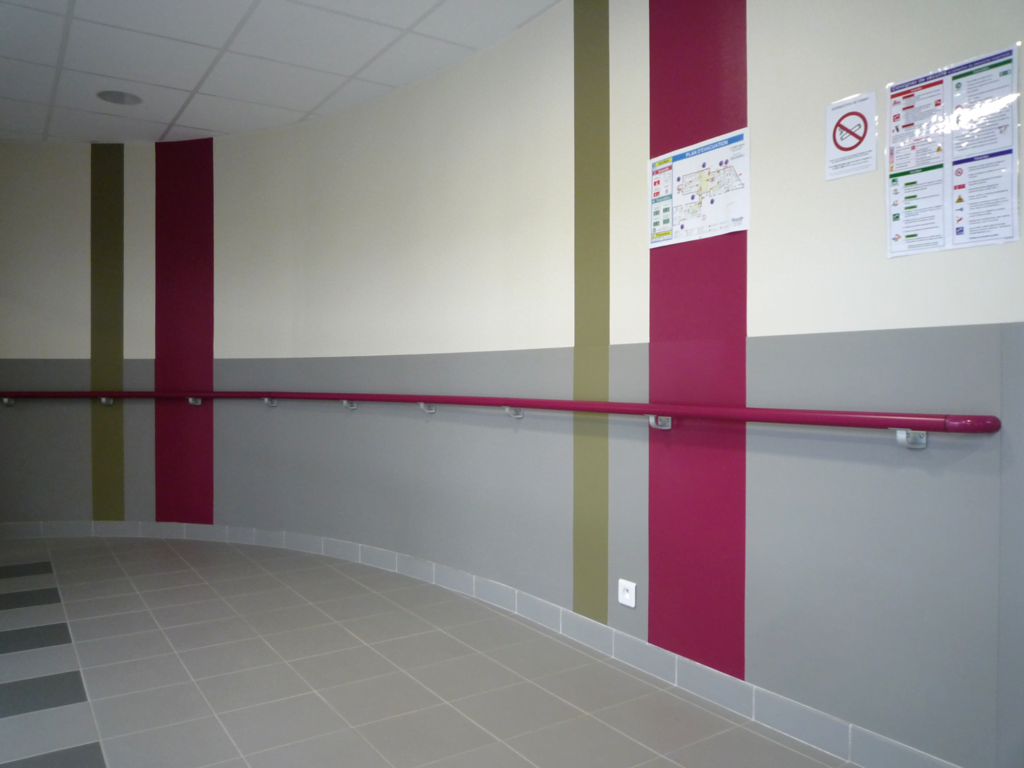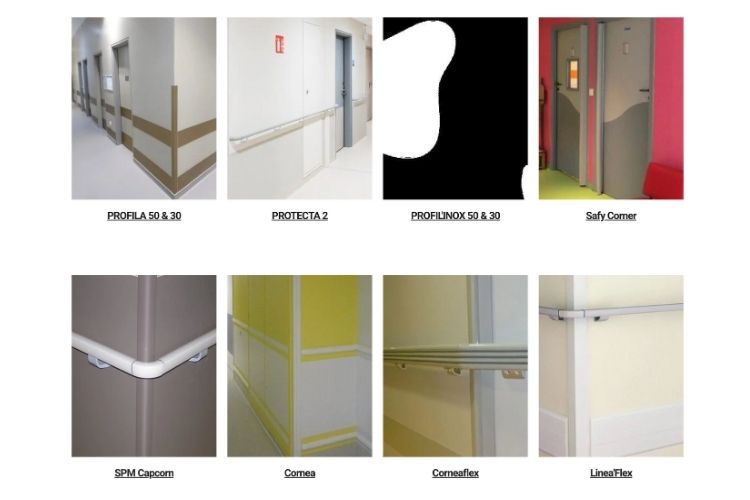The appearance of your work environment plays an essential role in making an impression on your clientele and customers. Even the smallest scratch or dent can cost money and time for repairs, and the only way to avoid this being an ongoing issue is to invest in prevention. Corner rails are wall protection systems specifically designed to protect the corners of your building, increasing the lifespan of your building and reducing maintenance costs. In this article, we’re taking an in-depth look at how corner rails maintain the preservation of your heritage building.

Image Credit: Flicker.com – Merry Jack
The Architectural Significance of Corner Rails
Enhancing Aesthetic Appeal
Any addition to your building should ideally serve a functional purpose while maintaining the overall appearance. Wall protection is required in some of the most prominent places of your business (hallways, waiting rooms, etc.), so they must not clash with your decor and design choices. Our PVC corner rails have a sleek, striking look that will be pleasing to the eye while giving your business a sense of safety and professionalism. Our corner rails are designed to suit a wide range of aesthetic layouts, meaning they’ll only stand out in all the right ways.
Installing corner rails can be a great way to spruce up your office while protecting your walls. With a range of colours and styles available, corner protection can suit a range of architectural styles, from modern to heritage and everything in between. When designing and installing corner protection in your building, we focus on finding a solution that balances functionality and the preservation of your building’s character.

Structural Protection and Integrity
Accidents happen, no matter how careful you are. When it comes to the corners of your business, it’ll only be a matter of time before someone makes a mistake, especially in hectic work environments. The edges and corners of your walls are the most vulnerable areas when it comes to being exposed to damage. Something as simple as a trolley taking too sharp a turn when exiting the corridor can leave a dent, scratch, or chip in your wall. In serious cases, the impact can affect the structural integrity of the wall, leading to costly repairs, especially in older buildings. Unless you take steps to protect your corners, this will be a re-occurring problem that causes your maintenance costs to skyrocket. Wall corner guards are a one-time investment that will protect your corners from collisions and greatly reduce your repair costs.
Environments like hospitals, schools, laboratories, food preparation areas, or waiting rooms are just some common examples of high-traffic areas vulnerable to sudden impact from staff, patients, or customers. When time is of the essence, you don’t want to waste time worrying about damaging your walls. Corner guards provide your company with the peace of mind that your wall corners will remain protected while you go about your daily activities.

Material Choices for Corner Rails
Exploring Common Materials
There are a lot of materials used to make corner rails, but for our money, PVC Vinyl is the material of choice. Beyond being an affordable material that is easy to mould and customise, PVC is very impact-resistant and easy to maintain. It’s also available in a wide range of colours and styles, making it an ideal fit for a range of aesthetics and decor.
Material Selection for Specific Architectural Needs
Different styles of corner guards will suit a certain type of building. The ideal choice will serve your practical needs while enhancing the look of your building. We provide corner guards for a range of areas, including corridors, door frames, and other settings. You can view our range of available corner guards, and our team is happy to offer guidance in choosing the best option for your needs.
Aesthetic Integration of Corner Rails
Customisation for Architectural Styles
Different buildings will have their own unique style and charm, so you want corner guards that will work with this aesthetic rather than clash with it. Along with a range of pre-existing designs, corner rails can be custom-designed to suit your needs and look. Not sure what will work with your building design? That’s okay. Our team can examine your workspace, carefully listen to your needs, and provide our expert opinion on the best choice of corner guard for your building.
Want to see how corner guards can be incorporated into work environments? Why not take a look at some of our completed projects to see some examples of our work in a range of locations?
Enhancing Space with Corner Guards
Renovation is a great way to reinvigorate an existing space, giving businesses a new lease on life. Corner guards are an affordable way to makeover your existing space. Along with making your business look stylish, they add a professional atmosphere to any environment.

Installation and Durability of Corner Rails
Common Installation Methods
The two main installation methods are adhesives and screws. Each has its advantages in the right setting. Adhesives offer a cleaner look to your installation and are more reliable on most surfaces than screws. They are also stronger and more versatile than screws.
Screws are quicker for installation and don’t require a drying time. They’re also less vulnerable in especially hot environments. Screw installations are also easier to disassemble, should that be required.
Both installation methods can be effective in the right circumstances, and some installations may even use both. Each project is judged on its own merits, and the best choice will be made for the setting.
Longevity and Maintenance
With proper maintenance and care, PVC corner guards can easily last 10–15 years. Like all products, good upkeep and care will help your corner guards thrive and stay in good condition.
When it comes to cleaning, PVC is an easy material to look after. We recommend using a soft cloth and warm water with either some washing-up liquid or a similar non-abrasive cleaning agent. DO NOT use bleach or harsh cleaning chemicals, as this can cause more harm than good and is unnecessary.

Call in the Experts in Wall Protection
Corner rails serve a multifaceted role in any business, providing a means of preservation and protection while also improving the aesthetic appeal of your workspace. Choosing the right type of corner guard for your establishment is essential for both style and functionality. The team at Rootex knows wall protection inside and out and is happy to assist in all your corner protection needs.
To discuss your wall protection needs or for more information on corner guards, get in touch with our friendly, expert team today!
FAQ Section
1. What are the key benefits of installing corner rails in buildings?
Corner rails protect your walls from impacts and the resulting damage, including dents, scratches, chips, and structural harm. Along with functionality and reduced maintenance, they can be a stylish addition to your workplace.
2. Why choose PVC for corner rails?
PVC is a hygienic and durable substance that is simple to maintain and versatile in application and appearance. Most importantly, it can withstand heavy impacts and protect the vulnerable areas of your building.
3. Can corner rails be customised to suit specific architectural styles?
Yes. Our team can custom-design corner guards to suit your building’s unique characteristics.
4. What are some standard installation methods for corner rails?
The two main installation methods are screws and adhesives. Adhesives involve gluing the corner guard to the wall. Using screws to attach guards is the alternative option.
5. What maintenance is required for corner rails to ensure longevity?
By using PVC, the maintenance needs for corner guards are minimal. Washing your corner guards with warm water and detergent is usually all you’ll need. It’s best to remove any organic material (food, dirt, etc.) ASAP, as it can cause mould to grow.

